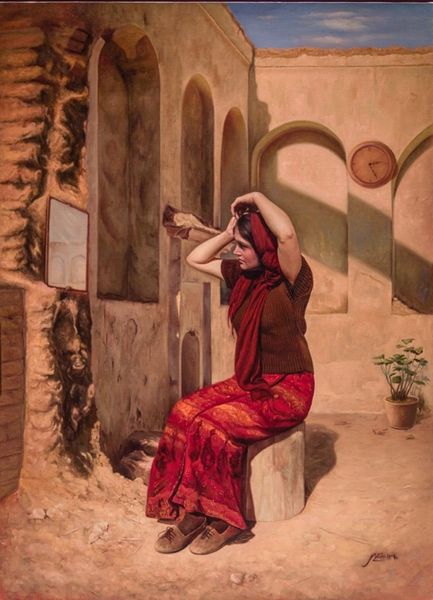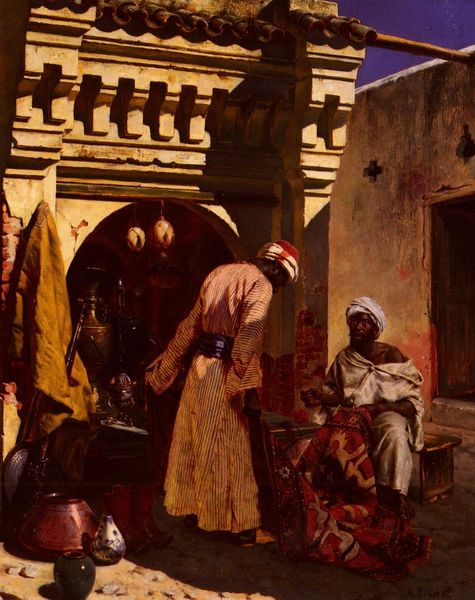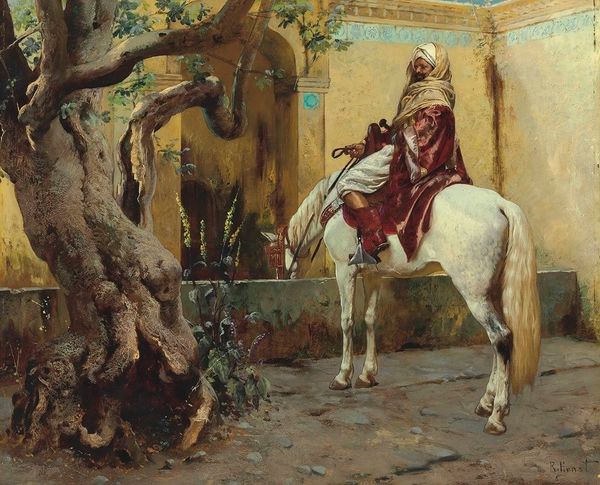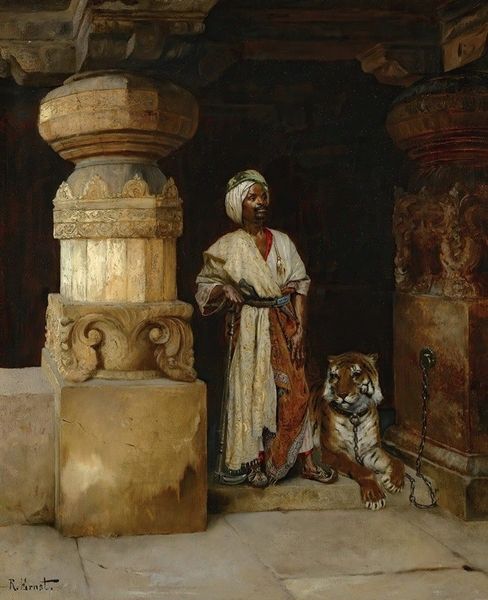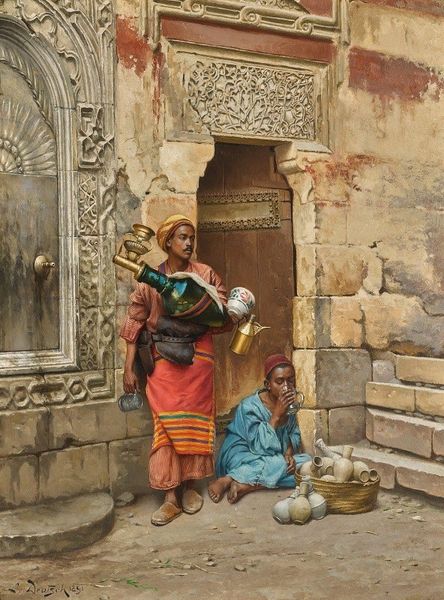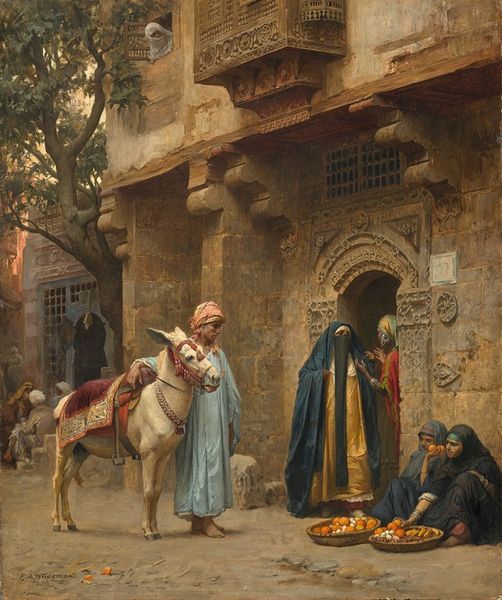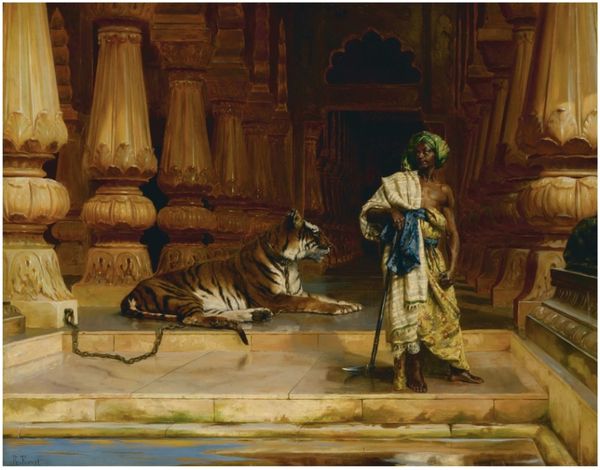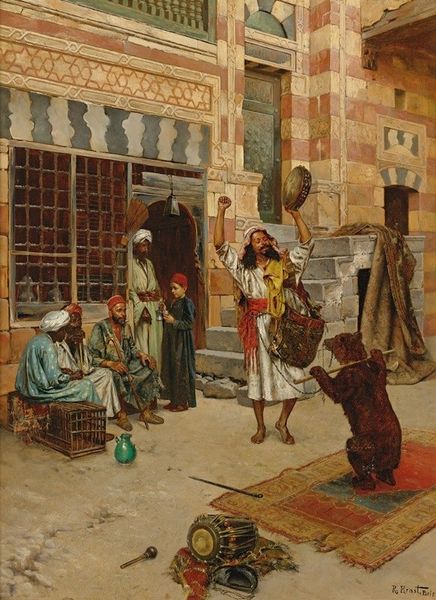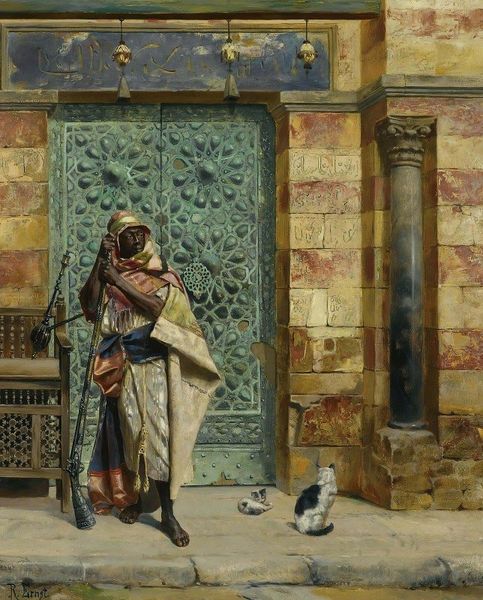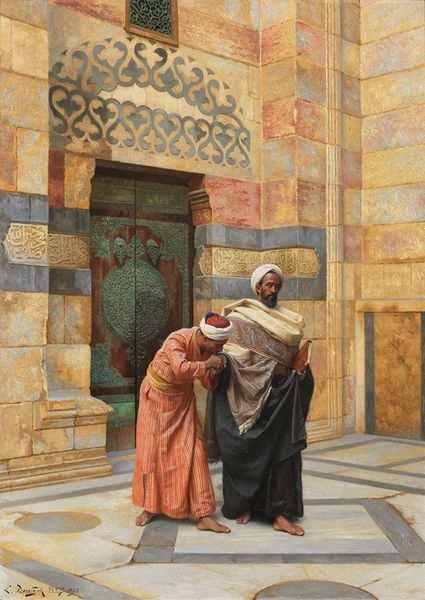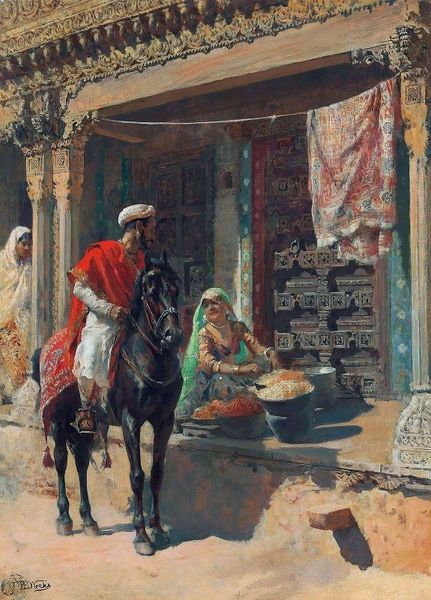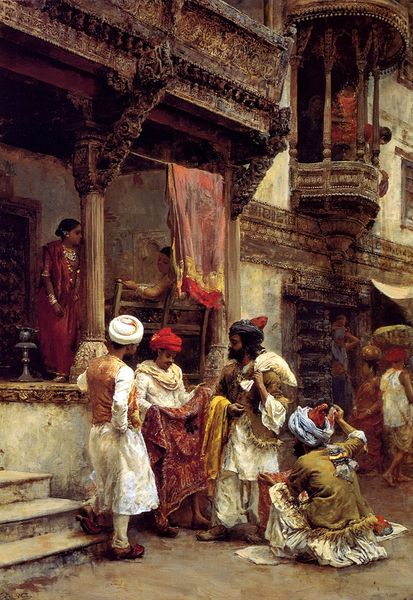
painting, oil-paint
#
painting
#
oil-paint
#
landscape
#
figuration
#
orientalism
#
genre-painting
#
academic-art
Copyright: Public domain
Curator: Before us hangs Rudolf Ernst's oil painting, "Awaiting the Tiger." It is rather captivating. What is your initial reading of this work? Editor: Immediate impressions? Danger, surely! The tiger itself. The precariousness of the man, the visible sweat and tension; also I notice the materiality: oil paint rendered in a distinctly Academic style and the potential for high gloss of the paints. It's clearly meant to signal the "value" of the painting. Curator: Indeed. Notice the interplay of light and shadow. The figure, illuminated by the sun, is positioned perfectly in contrast with the darker interior occupied by the menacing tiger, underscoring a rather classic compositional arrangement predicated on narrative tension and dramatic contrast. This painting, isn’t just a depiction, but a strategic orchestration of visual components, no? Editor: Precisely, and consider the materials themselves. These paints would have been produced through very exploitative labor practices throughout the world – gathering pigments and materials that came to him through networks of unequal global exchange. This man isn't just awaiting the tiger, he is situated at a key node of colonial trade. And look at the costuming here! The very fabric of those robes, their specific weave, tells us of these networks of production. Curator: I am rather struck by the almost photographic quality. It really represents a peak in academic Orientalism, presenting a hyperrealistic yet exotic vision, which flattens a very nuanced array of cultures. Do you observe any semiotic resonance? Editor: Absolutely. I look also at the role that art production played at that specific time and how paintings of Orientalist landscapes reinforced power dynamics related to production and social value: in addition to pigment gathering, what about the extraction of the scene? The cost of its creation versus the actual local reality being represented. Curator: A valuable addition to our understanding! It seems both our perspectives help to unlock deeper appreciation. Editor: I couldn't agree more, allowing new ways of approaching historical objects, materials, and their production in conjunction with purely aesthetic readings of light and contrast can add critical insight.
Comments
No comments
Be the first to comment and join the conversation on the ultimate creative platform.
